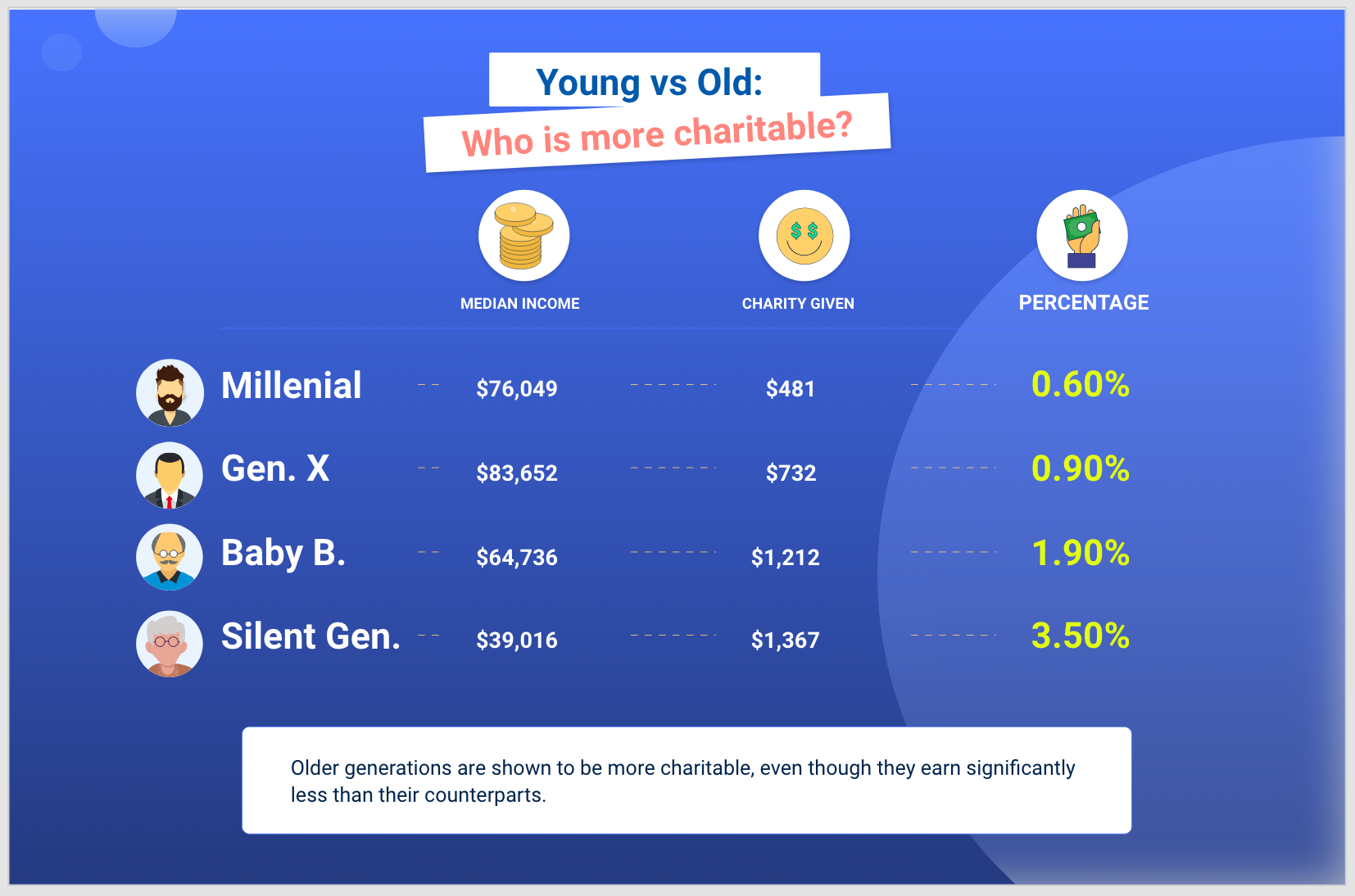Young Vs Old: Who Is More Charitable?
About Meredith
Meredith Lepore is a content editor for Credello. Her work has appeared in Travel & Leisure, The Observer, InStyle, Marie Claire, Refinery29, Brides, Architectural Digest, Business Insider, and TIME. She earned a Master's in Journalism from the Newhouse School at Syracuse University.
Read full bio
At a Glance
We all deserve to thrive. Reality, however, can be harsh – and millions of people are struggling to survive, let alone get anywhere near thriving. Charity organizations help bridge certain gaps, from providing direct help to raising awareness about important issues. While charity alone won’t solve societal issues, the act of giving sure makes the world a little less harsh.
In this article, you’ll learn:
So, who’s more charitable these days? Younger people, who are often touted as socially conscious? Or older generations, who may have more financial stability and more to give? Credello dove into research to help answer this question and highlight generational differences in charitable giving.
It turns out that looking at the ratio of median income to charity given for each generation is quite revealing: Older generations are more charitable, even though they earn significantly less than their counterparts.
Generational differences in charitable giving
There are different ways to look at this, but they all point to similar answers. According to Bridgeworks, Baby Boomers donate the most charitable dollars in the U.S. – their donations account for 43% of all donations in the country. Additionally, members of the Silent Generation, who are even older and grew up during the Depression era, give the most generous contributions ($1,367 per person annually).
Gen Xers are less generous in terms of both average dollars contributed ($732 per person annually) and overall charitable contributions (20%), but they currently lead the way as far as volunteering. You can say they like to get directly involved: According to Charitable Impact, Gen Xers have among the highest volunteer rates in North America – 29% in the U.S. and 44% in Canada.
As for Millennials, Bridgeworks notes that “they don’t make large financial contributions right now (only 11% of all charitable giving) because they are encumbered by low starting salaries and high college debt.” Yet 60% of them do give money to charity, just in modest amounts ($481 per person annually).
Empathy and social impact
There are a few possible explanations for these fascinating differences. When you think of the harsh conditions in which the Silent Generation grew up, having lived through poverty and war, it’s easy to understand their tendency to give back. Baby boomers are in a position to give, as they were able to build more financial stability for themselves than younger generations. Gen Xers are also getting there in terms of financial stability – they do have the highest median income – but, as Bridgeworks puts it, “many Xers became skeptical of institutional giving in their teen years when a steady media stream broadcasted corporate scandals and non-profit waste.” They still value philanthropy but would rather contribute in different ways. Finally, millennials are giving what they can. As their earning potential increases, it will be interesting to see how this shifts the landscape in terms of charitable donations per generation.
Bottom line
Even though the stats reveal that older generations give more than younger ones in relation to their median income, there’s more to the story. Each generation does value giving back, and even though there are generational differences in terms of what they can give and how they choose to give, this is something to celebrate. Having more conversations on this topic may just foster a more collaborative and inclusive approach to philanthropy across generations.










